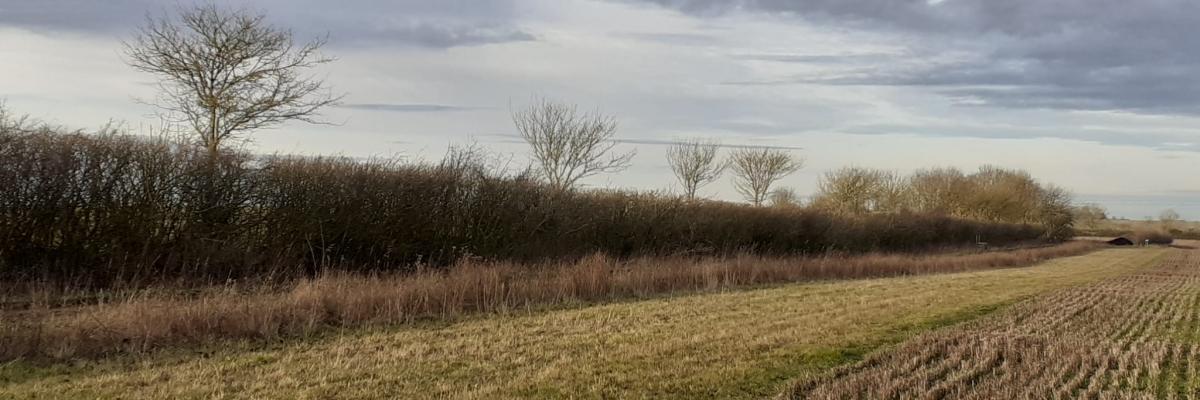
Six key actions to restore nature on farmland
28 February 2023
In the past, if you asked two conservationists how to help wildlife on farmland, you would likely get two different answers. Nature-friendly farming need not be that difficult and there is growing interest in restoring nature to make farming more profitable, productive and resilient to the biggest food production challenges we face.
All the specialist wildlife organisations came together to develop this recipe for success, published on the Farm Wildlife website as the six key actions. We believe that this model would work for any farming system anywhere in the UK. If you have questions or comments on how this could be applied to your farm, please contact us via the website. Visit us at Groundswell 2023 to pick up a free booklet explaining the actions with case studies produced jointly with the Nature Friendly Farming Network.
Where you are farming semi-natural habitats (e.g. unimproved grassland, heathland or moorland), the priority for nature-friendly farming is to maintain these in good condition, or restoring them to enable wildlife to thrive. This is the first of the Farm Wildlife six key actions.
Elsewhere on the farm, nature-friendly farming means applying all of the remaining key actions, with a minimum of 10% of the farmed land managed as wildlife habitats to provide a diversity of habitats and food sources for a broad range of farmland wildlife. Ideally, management should be tailored to the needs of species of conservation concern found in the landscape. Farming practices should aim to enhance life in the soil, minimising the intensity and frequency of cultivations, the use of chemical pesticides (including those used to control livestock parasites), inorganic fertilisers, and abstracted water. These nature-friendly farming principles apply equally to conventional, organic and agroecological farming systems.
The Farm Wildlife six key actions are:
- Enhance existing semi-natural habitats
- Maximise the wildlife value of field boundaries and margins
- Create or restore wet features
- Create or restore flower-rich habitats
- Create seed-rich habitats
- Sympathetic management of the farmed area
Enhance existing wildlife habitats

The six key actions start with enhancing the wildlife habitats already present on the farm. This can be done by considering making them bigger, better, more numerous, and connected, addressing in order of priority:
- Better: focus on the habitat quality. Are the diversity of plants and habitat features in the habitat as rich as they could be? Could the management be adjusted in any way to improve the habitat condition?
- Bigger: could any of the habitat patches be expanded? Larger blocks of habitat mean that populations of species are more resilient to challenges such as harsh weather conditions or diseases.
- Connected: can habitat blocks be connected by corridors of similar habitat to allow species to move freely from one patch to another, reducing the risk of local extinctions?
- More: is there scope to create new areas of habitat to complement those already in the landscape?
Maximise the wildlife value of field boundaries and margins

Field boundaries and margins form the most obvious wildlife corridors on farmland as well as forming an important wildlife habitat, with the potential to connect habitats and allow wildlife to move around the farm. The priorities for their management are to protect them from agricultural inputs and to create a diverse structure. Well-managed hedges and ditches underpin a thriving wildlife community that aids crop protection and pollination.
Create or restore wet features

Water is a crucial element for wildlife. With the right management, wet habitats can provide some of the most wildlife-rich areas on farmland. These may be farm ponds, ephemeral ponds, scrapes or open ditches.
The best wet habitats have clear water that is low in nutrients and free of pollution, allowing typical wetland aquatic plants to thrive. It is vital to minimise the amount of soil matter, fertilisers, and pesticides reaching water bodies as they have a severe impact on water quality.
Create or restore flower-rich habitats

Flower-rich habitats provide valuable wildlife habitat and help to improve populations of beneficial insects that can make farms more productive. Farms can be great environments for native flowering plants. Indeed, many depend on farming practices for survival, including rare arable plants and wildflower-rich grasslands.
Create seed-rich habitats

Seed-rich habitats are vital to a wide range of farmland species, especially seed-eating farmland birds, and can be provided in a variety of forms. Sowing specific wild bird seed mixes, leaving areas unharvested, or retaining winter stubbles can provide vital feeding opportunities to help seed-eating birds survive the winter.
Sympathetic management of the farmed area

The Farm Wildlife plan is largely focused on managing at least 10% of the farm as wildlife habitat. However, how the rest of the farmed land is managed will still have a major bearing on its value to wildlife, and supporting nature on farmland can have benefits for production and profitability too.
Farming practices that look after the soil structure and increase the soil organic matter are good for life in the soil, which underpins much of the wildlife above the soil as well as making soils more resilient to droughts and waterlogging.
Integrated management practices that minimise the use of pesticides and parasite-control chemicals reduce the impact they can have on non-target species and make farms more resilient to resistance issues and changes in regulatory requirements.
Any measures that can reduce a farm’s use of inorganic fertilisers will create healthier soils and watercourses, as well as reducing costs. Minimising the use of abstracted water is also good for wildlife.
There are a few habitat features that can be created in fields to boost wildlife, such as beetle banks to boost predatory insects in crops, skylark plots to boost skylark productivity in winter cereals, and fallow plots for ground-nesting birds such as lapwings.
Richard Winspear writes of himself: "The enthusiasm of farmers to help Stone-curlews in Berkshire, Hampshire and Wiltshire during my first contract after leaving college inspired me to dedicate my career to advising farmers on wildlife conservation. Afterall, with farmland forming 70% of the land in the UK, what could be more important to restoring nature than working with farmers? I am now Agricultural Advice Manager at the RSPB where we work in partnership to develop nature-friendly farming advice with all of the other wildlife NGOs to provide consistent advice that supports all nature."


